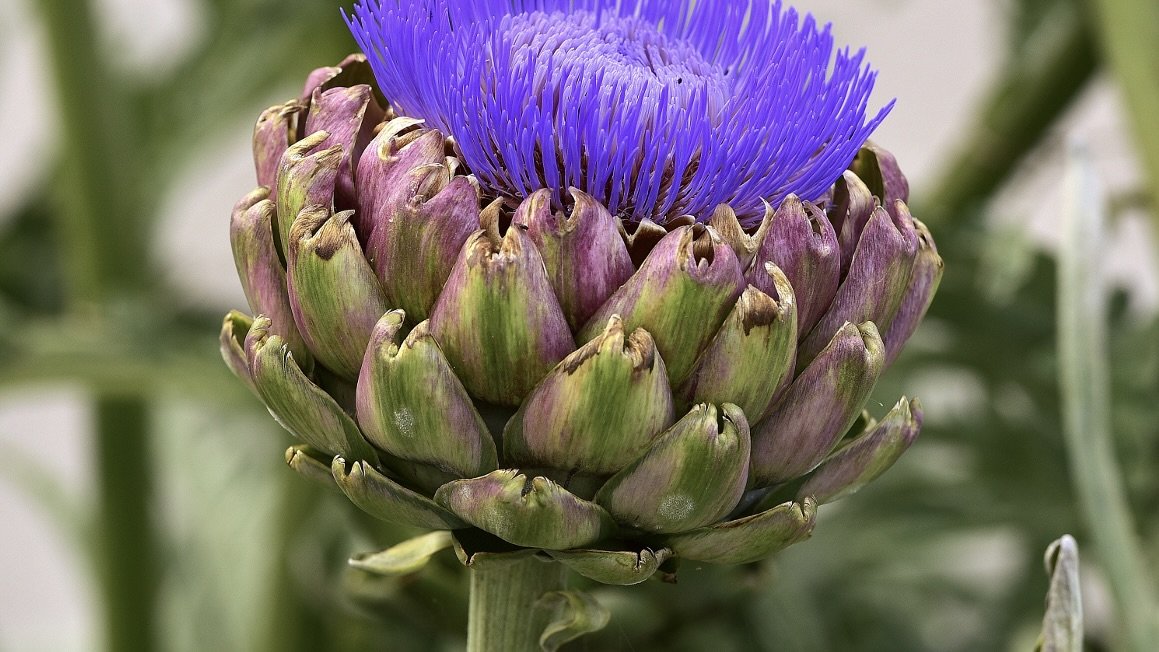THE ARTICHOKE, WTF? [WHAT’S THIS FOOD?]
Q. “Who first ate the artichoke? I mean, look at the thing.” Pat
A. This is akin to the famous quote of Jonathan Swift, the Anglo-Irish satirist and writer, “He was a bold man who first ate the oyster.”
In food and cooking, appearances matter, don’t they, Pat? (“We eat with our eyes first,” as another saying has it.) But appearances can deceive as well. Yes, ‘twas a brave man who first ate the oyster, but, man, did he give generations of bivalve mollusk munchers an immeasurable gift.
The artichoke, Cynara scolymus, is a member of the thistle family—and looks it when fully mature, especially its flower, shooting out of the gnarliest bouquet of leaves in the edible plant family kingdom. Eat that? Fair question.
Its history as a food gives some indication of both its edibility and its delectability. The globe artichoke is a domesticated cardoon, a wild thistle coming from North Africa and much appreciated in the Mediterranean Basin and along the coast of N. Africa. (It is not the “Jerusalem artichoke” which isn’t in the same family of thistle plants and is a form of sunflower prized for its tuber or root, and is neither a true artichoke nor has anything to do with Jerusalem, the Holy City.)
When young, as plants, both the cardoon and globe artichoke (this latter, ranging in colors from green, light to dark, to purple, to purple-tinged green) have been eaten in their entirety—from stems, leaves and flower buds—since antiquity. The Romans knew it as carduns; the Greeks, as kaktos (hmmm) and both peoples ate immature plants whole, pickled, stewed, boiled, even fried. Today, one of the more famous preparations of smaller, whole artichokes is Carciofi alla Giudia, made famous since the 16th century A.D. in the many trattorias and restaurants in Rome’s Jewish Ghetto and, now, throughout the world.
So, looked at historically, the artichoke isn’t fearsome and was, in truth, highly prized as a food for centuries.
It’s only when the flower bud matures is it imposing. Some brave souls had long ago to discover how to manage that.
The most prized part of the artichoke is its sweet-meat “heart,” which sits under an inedible choke (proving, in one form, its thistle-ness), all wrapped by dozens of mostly inedible leaves called “bracts,” each of which ends in a hard, sharp, needle-like point.
Why would anyone go after all that as a food, indeed?
Well, cooks figured out how: as long as the flower bud is not overly mature and the bracts begin to pull away—like a flower—their bases are edible, as long as your teeth can pull them off. Dipped in simple melted butter, they are like eating all the small bits of a steamed crab, made tastier by the repeated efforts of the eater in their eating.
(The Italians have a phrase, la politica del carciofo, that roughly translates as “it’s most profitable to deal with your opponents one at a time.”)
Knowing about the choke, it can be scraped off the heart, and then, well, there is that heart, turned down by no person yet in recorded history.
A very mature artichoke plant and its flower, no longer much edible, but very ornamental. Photo from Alimentarium.com, copyright Turchany

